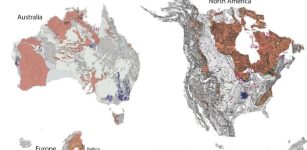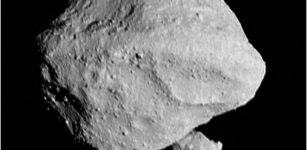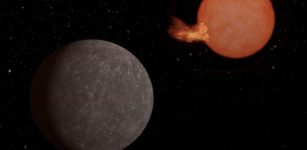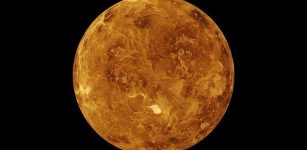Moon: Why The Moon Has A (Very Thin) Atmosphere
Eddie Gonzales Jr. – MessageToEagle.com – The moon’s atmosphere is so thin that we only discovered it in 1971—after astronauts had already been there. Ever since, scientists have been puzzling about how it got there.
A team of scientists from the University of Chicago and MIT, however, may have solved the decades-old mystery.
A photo of the large crater named Ptolemaeus, taken from the Apollo 12 spacecraft. Image credit: NASA
By analyzing samples of lunar soil from five different Apollo missions, they found evidence the moon’s atmosphere is created primarily by repeated impacts from small meteorites that kick up dust from the surface.
According to, study author Nicole Nie from MIT, analysis shows that meteorite impacts create at least 70% of the lunar atmosphere, while solar wind abrasion contributes a much smaller percentage.
“It turns out the answer to this longstanding question was right in front of us—preserved in lunar soil brought back to Earth by the Apollo missions,” said study author Nicolas Dauphas, professor of geophysical sciences at the University of Chicago.
The lunar atmosphere differs from Earth’s. It’s an extremely thin haze of atoms hovering above the Moon’s surface, unsuitable for human breathing. Earth’s dense, oxygen-rich atmosphere remains unique in our solar system.
An artist’s illustration of the solar wind bombarding the moon—which has been studied by NASA’s twin ARTEMIS spacecraft. Image credit: E. Masongsong, UCLA EPSS
These atoms don’t stay for very long; they are continuously either dropping back down to the moon’s surface or lost to outer space, so they must be continuously replenished from somewhere.
Earlier efforts to determine the origin of these atoms were inconclusive. Two main theories proposed were meteor impacts, which constantly bombard the moon and kick up dust, and the solar wind, a stream of high-energy particles from the sun that collide with the lunar surface, also causing dust to fly.
In 2013, NASA’s LADEE orbiter observed the moon’s atmosphere, noting increases during meteor showers and decreases when shielded from solar wind by Earth’s shadow. However, LADEE couldn’t determine which factor had the greater impact.
Instead of trying to measure the lunar atmosphere directly, Nie and Dauphas believed Apollo mission soil samples might provide answers, as they contain residue from atoms lost to space over millions of years.
The key was looking at two elements in the soil: potassium and rubidium. Elements naturally come in different variations, known as isotopes—some atoms are very slightly heavier than others. Meteor impacts and solar wind affect these atom variants differently. For example, the solar wind is more energetic, and it flings off more of the lighter isotopes to space than meteorite strikes do. Over time, the difference in atom variants becomes noticeable.
Decades ago, the techniques to distinguish between these isotopes did not exist, but now, by very carefully counting the proportions of isotopes, the scientists could see patterns.
“It’s actually quite a clear difference, once you are able to count them,” Nie said in a press release.
“Lunar soils show distinct isotope patterns compared to other lunar rocks, due to meteorite impacts and solar wind bombardment, allowing us to determine which process supplied more atoms into the atmosphere.”
Lunar soil samples from various Apollo landing sites were analyzed. Results indicated that meteor showers contribute significantly more to the moon’s atmosphere than solar wind, with a ratio of at least 70% to 30%.
Understanding space weather is important, Nie explained: “If humans want to move to different planetary bodies someday, we will have to understand what’s going on at the surface to be able to prepare,” she said. “Each planetary body is different, and the more we understand about these processes, the more complete picture we’ll have.”
Sample return missions from the moon and other planets are important. They can answer questions impossible to resolve using only spacecraft data.
“We anticipate that this study is going to be a significant foundation on which further studies can be done on samples returned from the lunar surface by the Chang’E and Artemis missions,” said Dauphas. “It is an exciting time to be working on the moon.”
Written by Eddie Gonzales Jr. – MessageToEagle.com Staff Writer












